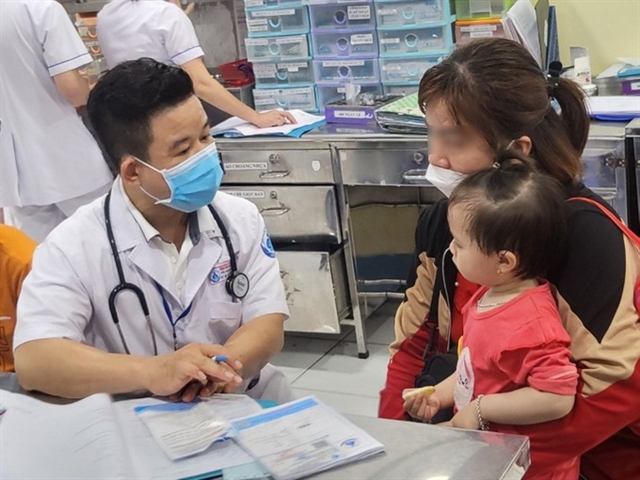 Society
Society

 |
| Ngô Chí Dũng, Chairman of the Board of Directors, VNVC General Director and Hervé Profit, Senior Director of the Substipharm Biologics Company, sign a memorandum of cooperation. — Photo courtesy of the VNVC |
HÀ NỘI — A memorandum of cooperation has been signed opening up opportunities to bring to Việt Nam many new vaccines, including vaccines to prevent hand, foot and mouth disease caused by Enterovirus 71 (EV71).
The memorandum was signed by the Việt Nam Vaccine Joint Stock Company (VNVC) and the Substipharm Biologics pharmaceutical company from Switzerland.
The two sides aim to increase scientific and clinical research exchange, improve professional knowledge for medical staff and raise public awareness of disease prevention, especially hand, foot and mouth disease in children.
The vaccine for hand, foot and mouth disease is recommended for children from two months to six years old.
Research results published in the prestigious medical journal The Lancet show that the vaccine is safe and has a high protective effect of up to 96.8 per cent, maintaining long-term immunity to help fight hand, foot and mouth disease caused by the recently circulating EV71 subtype at all levels of severity.
At the signing ceremony, Hervé Profit, Senior Director of the Substipharm Biologics Company, said that the vaccine against hand, foot and mouth disease would soon be brought to Việt Nam.
It will contribute to protecting children, minimising dangerous complications and bringing positive changes in the fight against hand, foot and mouth disease - a disease that places a heavy burden on children's health every year.
Expressing his thanks to the Substipharm Biologics Company, Ngô Chí Dũng, Chairman of the Board of Directors and VNVC General Director, said that currently, there was no specific treatment for hand, foot and mouth disease, causing great pressure on the health system.
Therefore, both sides hope to have a sufficient supply to ensure the rapid implementation of widespread vaccination for children to prevent infections in a timely manner.
Hand, foot and mouth disease is caused by two common groups of pathogens including Coxsackie virus A16 (CA16) and EV71.
Cases of CA16 infection often have mild symptoms and can be cared for and treated at home. However, EV71 causes more severe illness with many dangerous complications such as encephalitis, meningitis, myocarditis, pneumonia, pulmonary edema, respiratory failure, and circulatory failure, which can lead to death if not treated promptly.
The risk of severe illness due to EV71 is 16 times higher than infection with other strains of hand, foot and mouth virus.
Hand, foot and mouth disease is a contagious disease that spreads easily through direct contact with nasal, throat, saliva and blister secretions or indirect contact with patients' secretions and excretions on household utensils, toys, tables, chairs and floors.
Initial symptoms include fever, poor appetite, irritability, and sore throat. One to two days after the fever begins, painful ulcers appear on the tongue, gums, and inside the cheeks. A flat or raised red rash with blisters appears on the palms of the hands or soles of the feet.
Children under five have an immature immune system and are more susceptible to disease than older children and adults. Kindergartens have a high risk of infection and outbreaks. — VNS




